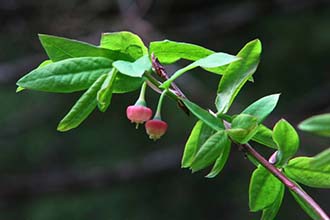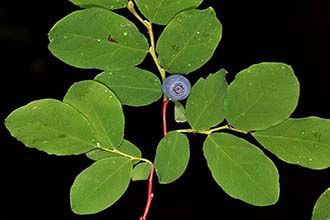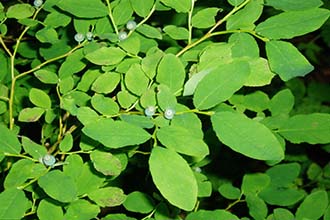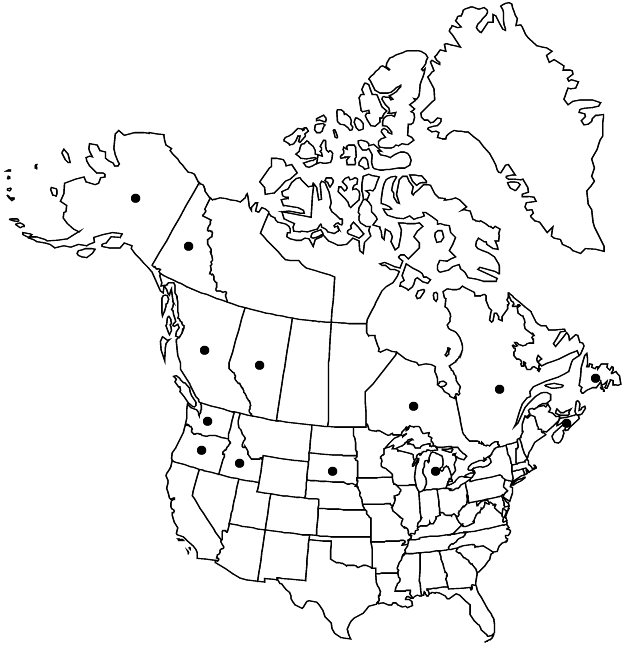Taxonomy: Kingdom - Plantae (plants). Subkingdom - Tracheobionta (vascular plants). Superdivision - Spermatophyta (seed plants). Division - Magnoliophyta (flowering plants). Class - Magnoliopsida (dicotyledons). Subclass - Dilleniidae. Order - Ericales. Family - Ericaceae (heath). Genus - Vaccinium L. Species - Vaccinium ovalifolium Sm.
Ecology: Ovalleaf huckleberry grows in cool, moist, submontane to subalpine forests, on open slopes, and at the edges of bogs, meadows, and swamps. It often occurs on elevated microsites in poorly drained areas. Ovalleaf huckleberry is commonly absent from major valley bottoms but does occur on subhydric, colluvial, and morainal sites in smaller valley bottoms. Ovalleaf huckleberry is shade tolerant and can persist in undisturbed forests dominated by species such as western hemlock or white spruce (Picea glauca). It is a common constituent of climax old growth Douglas-fir-western hemlock, Pacific silver fir, and moist western hemlock forests of the Pacific Northwest, and of western hemlock-western redcedar-Sitka spruce forests of southeastern Alaska. Seedlings grow in open, old growth stands or in clearcuts, but often do poorly in dense, immature forests.



